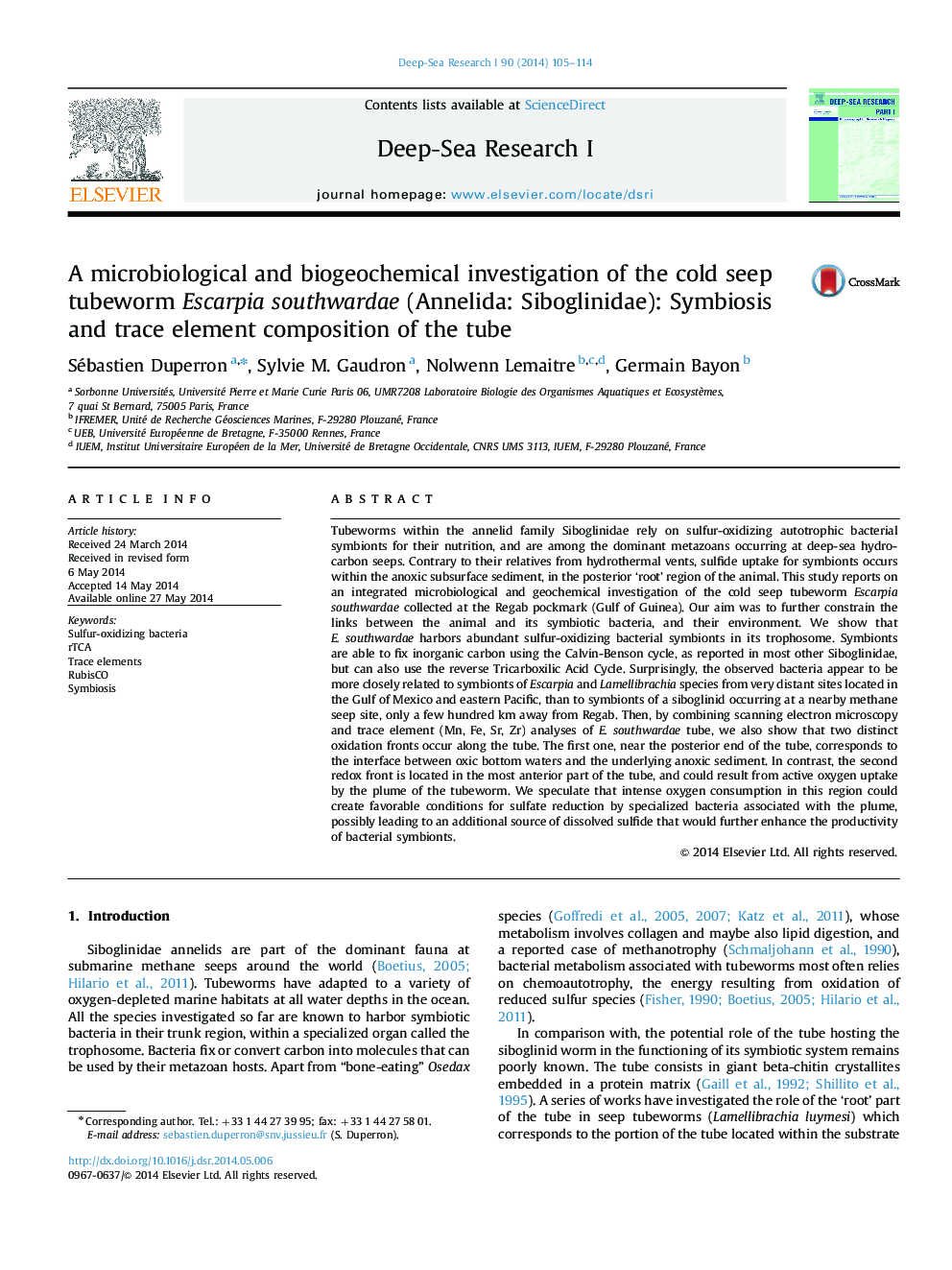| Article ID | Journal | Published Year | Pages | File Type |
|---|---|---|---|---|
| 4534511 | Deep Sea Research Part I: Oceanographic Research Papers | 2014 | 10 Pages |
•We characterize symbionts associated with the tubeworm Escarpia southwardae.•We investigate profiles of trace elements (Mn, Fe, Sr, Zr) along the tube.•Symbionts have genes for sulfur metabolism and autotrophic carbon fixation.•Closest relatives are symbionts of tubeworms from the Gulf of Mexico and Pacific.•Two distinct redox fronts occur in the anterior and posterior regions of the tube.
Tubeworms within the annelid family Siboglinidae rely on sulfur-oxidizing autotrophic bacterial symbionts for their nutrition, and are among the dominant metazoans occurring at deep-sea hydrocarbon seeps. Contrary to their relatives from hydrothermal vents, sulfide uptake for symbionts occurs within the anoxic subsurface sediment, in the posterior ‘root’ region of the animal. This study reports on an integrated microbiological and geochemical investigation of the cold seep tubeworm Escarpia southwardae collected at the Regab pockmark (Gulf of Guinea). Our aim was to further constrain the links between the animal and its symbiotic bacteria, and their environment. We show that E. southwardae harbors abundant sulfur-oxidizing bacterial symbionts in its trophosome. Symbionts are able to fix inorganic carbon using the Calvin-Benson cycle, as reported in most other Siboglinidae, but can also use the reverse Tricarboxilic Acid Cycle. Surprisingly, the observed bacteria appear to be more closely related to symbionts of Escarpia and Lamellibrachia species from very distant sites located in the Gulf of Mexico and eastern Pacific, than to symbionts of a siboglinid occurring at a nearby methane seep site, only a few hundred km away from Regab. Then, by combining scanning electron microscopy and trace element (Mn, Fe, Sr, Zr) analyses of E. southwardae tube, we also show that two distinct oxidation fronts occur along the tube. The first one, near the posterior end of the tube, corresponds to the interface between oxic bottom waters and the underlying anoxic sediment. In contrast, the second redox front is located in the most anterior part of the tube, and could result from active oxygen uptake by the plume of the tubeworm. We speculate that intense oxygen consumption in this region could create favorable conditions for sulfate reduction by specialized bacteria associated with the plume, possibly leading to an additional source of dissolved sulfide that would further enhance the productivity of bacterial symbionts.
